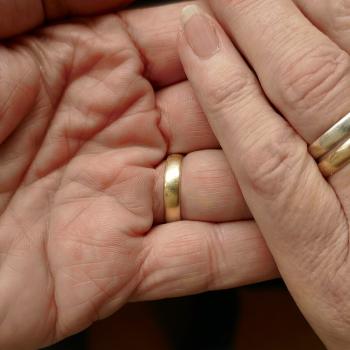A friend* posed this question recently: “I’m trying to get in shape, but I read different things about exercise. Some people say running is good for you, others say it keeps you from building muscle — am I doing it wrong?”
I’m not an exercise guru, but I’m a person who exercises, and who does so under constantly changing physical constraints. Here are my thoughts, presented for you to tweak as-needed.
#1 Your personal health is the primary guide.
It doesn’t matter how good xyz exercise is for people in general, it matters whether that exercise is good for you. So in the remaining three points, we are assuming that you are not going to do anything that is contraindicated in your own situation.
Real life example: At the YMCA my simple, regular-person arms-day workout at the moment is to run through the machines, do three sets of each arms/shoulders/back machine, something between 6-15 reps per set, depending on various self-assessed factors on how close to max-weight we want to get.
(I do stretching, balance, or bodyweight-only legs exercises in between sets until I am dying of boredom and have to just do the next set even though probably I didn’t rest long enough. Okay whatever, not fancy sophisticated training, but I’m from the 80’s this is how we roll.)
BUT: One of those machines is a no-go. Even with zero weight, my shoulder has a significant problem with just the resistance of the machine itself. Can’t do it. It is certain that to persist would be disaster. Attempting to make adjustments did not succeed.
Conclusion: Skip that machine and rehab the affected parts by doing a truly zero-weight version at home. If that didn’t work (it did) then the next solution would be to work with a qualified trainer or PT to figure out what rehab to get even to the point of being able to do the problematic movement at all.
Moral of the story: You have to be the grown-up who doesn’t just do what everyone says is a brilliant training program, but who discerns what your body is ready for now, and what steps you can take to prep for bigger, harder things down the road.
Related: Sometimes what your body needs right now is rest. Not-exercising, or not exercising in some of the ways we conceive of as “officially exercise” may be the correct treatment at the moment to allow your body to be ready for more exercising later.
#2 Rehab first.
The foundational set of exercises that belongs in your life are the ones you need to do in order to fix serious problems.
So, that shoulder of mine. Your knee. Your balance. Your coordination. Your cardiac recovery program. The subset of neglected housekeeping chores that truly depress you and make it hard to be at peace. The walk you take with a friend (or you wander around while talking to your friend on the phone) not so much because you need the walk as because you need the friend.
Physical and mental health are interconnected. So rehabbing your most desperate physical problems will help your mental health, and rehabbing your most desperate personal situations will help your mental health and give you more energy for purely physical work down the road.
#3 Exercise that you love and makes you feel good.
This is where my friend’s question about running comes in. She’s discovered that she absolutely loves long-distance running and walking. It feels great physically and it feels great mentally. It just fills her with joy.
Should she not do that, just because there are certain known limits and cautions to the benefits of distance training?
I say no. If she were getting to the point of overtraining syndrome generally, or seeing injuries and health problems that are well-known issues with excessive endurance training, then sure, okay, let’s revisit this.
But not right now. Right now she’s at a happy, balanced point where the amount of distance work she’s doing is clearly improving her health.
I’m that way with intervals: You shouldn’t do only intervals. You should be aware that overtraining is easy when you’re an interval-junky and hello maybe you should dial it back just a notch, Jennifer? But if it’s your thing, you can make it work.
For my sister it’s soccer. For my husband it’s skateboarding. For our grandparents it was gardening. For another friend at church it’s weightlifting.
Make the core of your exercise plan the thing that you love. Why?
- You will actually do it.
- You will reap massive mental health benefits from the simple fact of doing something fun.
- You won’t hate exercise.
The fact that it isn’t the exact perfect exercise scientist’s “ideal” workout is offset by the reality of you being healthier if you are doing the thing that brings you joy.
That, in turn, will make it easier to do the other stuff that comes next.
#3.5 Get credit for your regular life.
Pause here before we move on: There are likely types of exercise you already get just going about your regular life. Cleaning your house (or someone else’s), hauling the kid around, climbing the stairs, raking leaves, pottering in the workshop . . . these aren’t nothing.
Before you move on to the next item, take an inventory of the types of exercise you don’t need to add to your life because they are already there.
#3.75 Claim the easy upgrades.
One of the things I started working on a few years ago was stretching and building up strength so that I could do a deep, stable, flat-footed squat.
A deep squat is a normal human body action that tends to be missing from our repertoire in parts of the world with lots of chair- or standing-height work surfaces. I entered adulthood completely unable to do this because my tendons weren’t flexible enough.
(I’m not selling this to you, I’m just telling a story.)
So anyway, I slowly began working on first rehabbing the missing flexibility, and then once I could physically do the thing at all, I had to build up my strength. I will still not be mistaken for one of those ladies who cooks dinner on her kitchen floor every afternoon, but I’m far better at this than I used to be.
And here’s the thing: It’s something I can train while doing other things. Instead of bending over from the waist or using a stool (each has their place) there are certain every day chores then lend themselves to deep squats as the ideal body posture, if your body responds well to it.
It’s just a matter, for me, of remembering to choose to do it that way.
That’s an example of an easy upgrade.
The famous “park farther away” is an example of an easy upgrade if you’re trying to increase your daily step count (maybe you aren’t — I’ve had injuries where that’s the last thing we want to do, thanks).
You have types of actions in your life that can be done more than one way. If one of your choices allows you to also work an exercise you are trying to add to your life, that’s an easy upgrade. Do it when you remember it and it happens to make sense in context.
#4 Balance your exercise program to support your favorite sport.
Chances are the activities that bring you the most joy have some downsides. This comes in several areas.
First, your sport may have some very muscle-specific demands that need to be balanced or supported. For example, with biking my hamstrings were always tight — that requires some targeted stretching to offset the natural result of hours spent riding.
You may notice quite obviously what your sport-specific vulnerabilities are, but it’s worth researching that topic and doing the recommended stretches and strength training for your sport before an injury develops from overuse or lopsided use.
Another example related to this: One of the benefits, for me, of taking up ice skating is that it doesn’t stress the way walking does the part of my foot that has an old, easily-aggravated injury. But also that tells us I’m not getting the same benefits of foot exercise as you get with walking, which is what human feet are designed to do. So one of the things I do at the gym between sets on arms day are little exercises to compensate for that lack.
Likewise, in practicing your sport you may uncover some interrelated areas that need training because they contribute to overall better outcomes. For example: Do you need to work on your falling skills so that when you inevitably take a tumble while doing your sport, you do it in the safest possible way? That’s something you can seek training for. (She says and reminds herself to do that, sheesh.)
Secondly, your sport uses parts of your body that may need some bolstering. Do you need general upper-body work to grow your potential batting and throwing in softball? Do you need to improve your leg strength generally so you can get better results in ballet class?
Finally, most sports have aspects of fitness they promote and aspects they don’t. Does your sport include:
- Flexibility?
- Intense cardio?
- Long slow distance?
- Strength training and weight-bearing?
- Balance?
- Coordination?
- Speed?
- Functional exercises?
Think of the ones that are currently missing from your life as “challenge areas.” How can you meet the challenge?
In the long run you will be healthier if you are getting at least a little of all the different kinds of exercise human bodies are designed for. You will be able to do your favorite activities better and longer if you tend to your overall training, not just your sport-specific training.
So figure out ways to incorporate the missing items without going batty. You can do micro workouts while standing around the kitchen waiting for the water to boil. You can sign up for one class a week that works on the missing thing. You can find a friend and turn doing the hated thing into a social occasion.
There are options. And because all of this is oriented towards making you better able to pursue the thing that you love, there’s motivation you might otherwise not have.
Wait a minute this is way too much!
As I’m writing this, I’m out sick for the second time in two weeks. Nothing too bad, second round even milder then the first very low-key virus-type thing last week, but wow just finishing this draft the energy is gone. Not a fan.
This situation limits my ability to exercise as-planned.
If you are just getting started exercising, or just getting back to it, there are reasons that it wasn’t happening before. Some of those reasons may be reasons you can’t do as much as you’d like even now. Or maybe exercise is humming along pretty well, but you look at all those different types of exercise in an “ideal” program and think: When do you even do all this??
The answer is: Do what you can.
Right now for some readers maybe that’s a fairly sustained daily workout program, but for others it might be only a few small efforts a week. Start with the rehab and the high-payoff fun, in whatever amount is realistic right now. Don’t wreck yourself.
And then stay calm about the rounding-out aspect of long term training. You don’t have to overload your schedule.
- What if you interspersed micro-workouts in your challenge-areas only on the days when you were feeling particularly energetic?
- What if you only did certain types of challenge-area workouts once a week? Once every other week? Once a month?
Does that sound like exercise science heresy? Well, here’s exercise science math: If you do something once a month, that’s twelve more workouts a year than you were getting doing it zero times a month.
You’ll get something from that effort, and making that effort now will likely lead to your being able to include yet more of that type of training down the road. It will get easier mentally, it will get easier to schedule, and yes you will see more-than-zero physical benefit from that dabbling approach.
Dabbling also lets you experiment and make discoveries. You hated going to the gym for strength training, but you like free weights at home — or vice versa. You hate the exercise bike but you love the pool for long slow distance — or neither, you prefer walks in the woods. You crashed and burned at Pilates class for core workouts, but on the carpet in the living room with your kid crawling around like a baby possum it’s so much better.
You have choices. In the types of exercise you aren’t naturally good at and tend to neglect, you can find ways to enjoy the work. Slowly. Patiently. Not giving up on yourself.

Photo: Hikers in the Katampe Hills, Abjua, by Olawale Makanjuola, CC 4.0.
*Without going into personal details, yes it was a church-person in a church-context who posed the question. So indeed religious people do consider “non-religious” questions, often very practical ones, to be part and parcel of living the life God intends for us. Your body is holy, and taking care of it is one of the things we do to show our gratitude and be good stewards of the gift we’ve been given in it.


















